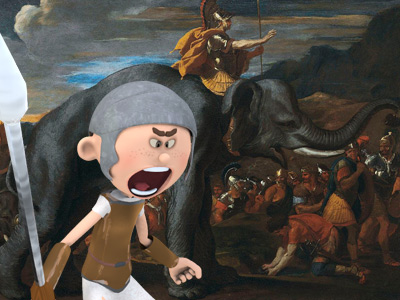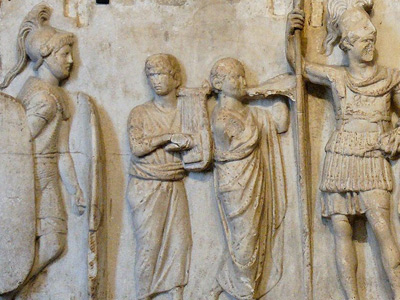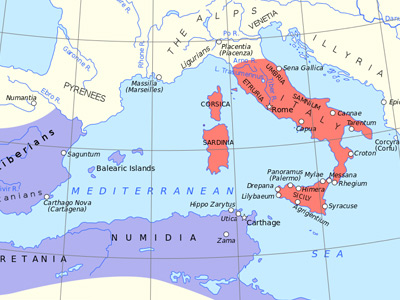First Punic War (264-241 BC)
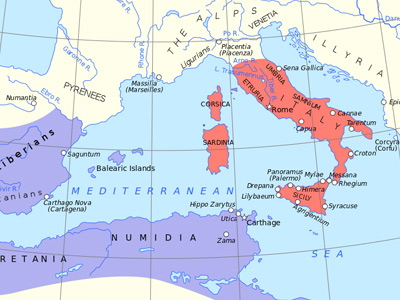
Invasion of Africa
After their conquests in the Agrigentum campaign, and following several naval battles, Rome attempted (256/255 BC) the second large scale land operation of the war. Seeking a swifter end to the war than the long sieges in Sicily would have provided, Rome decided to invade the Carthaginian colonies of Africa and usurp Carthage's supremacy in the Mediterranean Sea, consequently forcing Carthage to accept its terms.
Battle of Cape Ecnomus
In order to initiate its invasion of Africa, the Roman Republic The Roman Republic was a form of government of Rome and the era of the classical Roman civilization when it was run through public representation of the Roman people. Beginning with the overthrow of the Roman Kingdom (traditionally dated to 509 BC) and ending in 27 BC with the establishment of the Roman Empire, Rome's control rapidly expanded during this period - from the city's immediate surroundings to hegemony over the entire Mediterranean world. constructed a major fleet, comprising transports for the army and its equipment, and warships for protection. Carthage attempted to intervene with a fleet of 350 ships (according to Polybius), but was defeated in the Battle of Cape Ecnomus.
The Roman Republic was a form of government of Rome and the era of the classical Roman civilization when it was run through public representation of the Roman people. Beginning with the overthrow of the Roman Kingdom (traditionally dated to 509 BC) and ending in 27 BC with the establishment of the Roman Empire, Rome's control rapidly expanded during this period - from the city's immediate surroundings to hegemony over the entire Mediterranean world. constructed a major fleet, comprising transports for the army and its equipment, and warships for protection. Carthage attempted to intervene with a fleet of 350 ships (according to Polybius), but was defeated in the Battle of Cape Ecnomus.
Regulus's Raid
As a result of the battle, the Roman army, commanded by Marcus Atilius Regulus, landed in Africa and began ravaging the Carthaginian countryside. The Siege of Aspis (or Clupea) was the first fighting on African land during the war. Regulus was next victorious at the Battle of Adys, forcing Carthage to sue for peace. According to Polybius, the terms suggested were so heavy that Carthage decided they would be better off under Roman rule. The negotiations failed but fortunately, for the Carthaginians, Xanthippus, a Spartan mercenary, returned to Carthage to reorganize its army. Xanthippus defeated the Roman army and captured Regulus at the Battle of Tunis, and then managed to cut off what remained of the Roman army from its base by re-establishing Carthaginian naval supremacy.
HISTORY
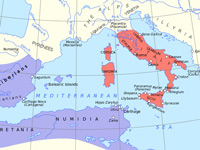
RESOURCES
This article uses material from the Wikipedia article "First Punic War", which is released under the Creative Commons Attribution-Share-Alike License 3.0.
© Stories Preschool. All Rights Reserved.
